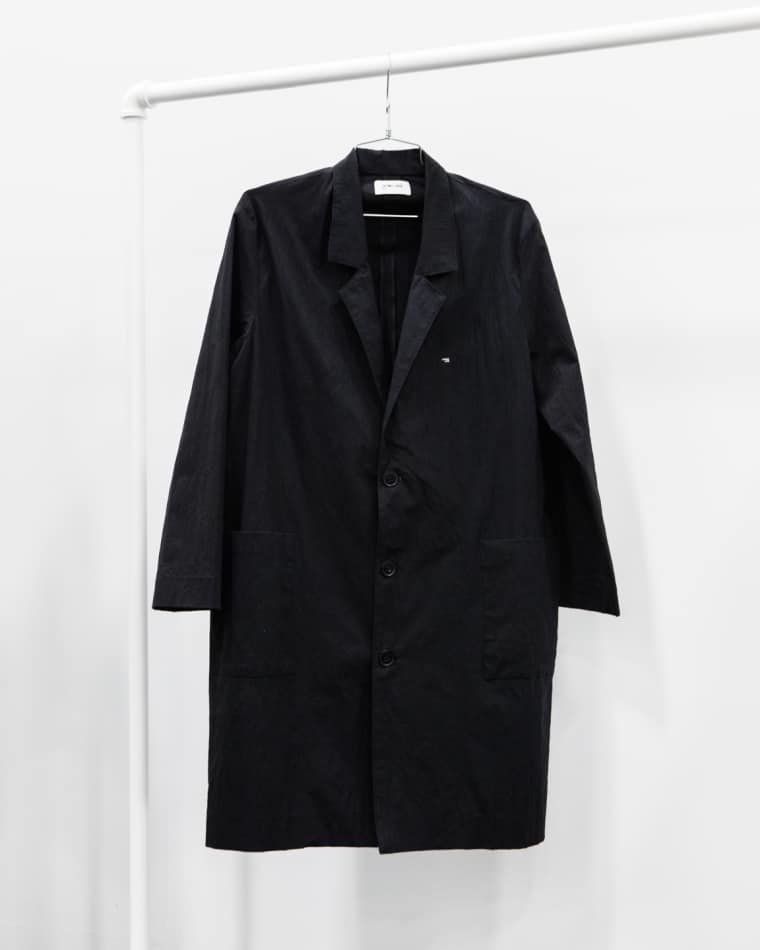5 Rising Designers On The Challenges Of Breaking Into Menswear
Fresh standouts from Capsule’s recent trade show talk frankly about building their brand.

Earlier this week, gleaming racks of shoes and clothes filled the entirety of Basketball City, the East River-adjacent venue where Capsule held its massive menswear trade show. Tucked amongst established designers like Billy Reid and Perry Ellis were the names we hadn't heard before, and those racks offered a glimpse into the future of menswear. We hand-picked five of our favorite young labels from the masses. Below, they tell us what it's like being green.


Pulled-together basics with a relaxed California flow.
Who: Anthony Franco, Joshua Willis.
Where: Venice, Los Angeles.
Around since: 2012.
Past life: FRANCO: I was at Stussy for nine years doing design. Josh was the creative director at a footwear company called Creative Recreation and had an audiovisual band.
How would you describe your line's aesthetic? WILLIS: Elevated essential basics. Relaxed, tailored basics that fit into the California landscape and incorporating the influences of our culture: surfing, skating, the street.
What are the biggest obstacles you face as a new label? Real talk? Funding. Having the bread to do it. We don't come from a lot, and we were never given anything.




Forget everything you knew about 2000s-era chinos.
Who: Matt Gorton.
Where: New York.
Around since: 2014.
Past life: I owned a men’s clothing company, CXXVI, for six years.
How would you describe your line's aesthetic? It’s more mature, and it’s more contemporary. Instead of taking a workwear vibe, we incorporated military and tactical details. It's work-inspired minimalism in four shades, so you can layer and create a monochrome uniform.
What are the biggest obstacles you face as a new label? Probably getting people to accept Dickie’s Construct as something different. When we originally started we were gonna go even higher-end, but the gap was too much.




Old school textiles meet new school silhouettes.
Who: Mriga Kapadiya, Amrit Kumar.
Where: Toronto and India.
Around since: 2010 for womenswear, 2015 for unisex.
Past life: We both worked a little bit in advertising but did our own events and design stuff on the side.
How would you describe your line's aesthetic? Hand-made, hand-woven, hand-dyed textiles in contemporary athletic forms. It’s graphic-heavy but with super clean silhouettes. Getting people to embrace color has also been tough. This is very toned-down for us.
What are the biggest obstacles you face as a new label? Getting people to appreciate how long textiles take to process when they’re used to everything being made in China and happening really fast, and getting people to respect us as a brand coming out of India, not just a brand that manufactures there.




4. Jungmaven
Hemp T-shirts that might save the world.
Who: Robert Jungman.
Where: California.
Around since: 2005.
Past life: This is my third hemp clothing brand. I had a professor in college tell me we could stop cutting down the rainforest if we started growing industrial hemp again, and that was my “a-ha” moment.
How would you describe your line's aesthetic? Simple, easy, relaxed-fit.
What are the biggest obstacles you face as a new label? The price points are always challenging. There are limited growers of industrial hemp, and most are in China—they really have the market. It’s hard to compete with other fabrics that don’t last as long. We try to make really rugged, natural T-shirts, and this one I’m wearing has a ten-year guarantee.




5. Broken Homme
Premium leatherwork made at home.
Who: Jim Leatherman.
Where: Long Beach and San Pedro, California.
Around since: 2012.
Past life: I was in the footwear industry, doing more skateboard-related stuff.
How would you describe your line's aesthetic? We take a lot of inspiration from motorcycle-riding, our friend group, black & white photography—the things we’re involved in. Kind of a blue-collar work aesthetic. We make our product in local factories in America.
What are the biggest obstacles you face as a new label? Manufacturing was a big hurdle for us. Finding places in the U.S. to develop footwear is definitely a challenge. We’ve had a lot of ups and downs with sourcing and a lot of the other hurdles most small businesses face. Bringing old-world construction and old-school garments into the new millennium is really hard—but that's also what’s fun about it.

